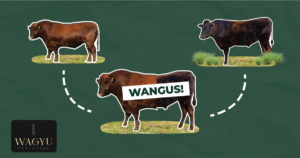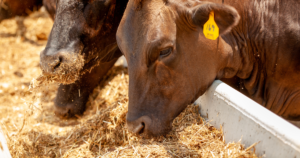2024 US Beef Imports – Its Impact on United States Producers
Table of Contents
The United States is recognized as the leading global producer of beef, while concurrently ranking second in terms of beef imports. While primarily focusing on the production of high-value, grain-fed cattle, the United States substantially depends on imports, particularly from Australia, for the acquisition of lower-value, grass-fed, lean goods primarily utilized in the manufacturing of ground beef. The importation of leftovers, which would otherwise be disposed of, serves as a supplementary component to the meat supply chain in the United States.
Nevertheless, the arrival of inexpensive Australian beef presents a substantial peril to local farmers, particularly in light of obstacles such as a declining national cow population.
Trade of Australian Beef
The beef trade between Australia and the United States is governed by a quota system that has been created by both the Australia-US Free Trade Agreement (AUSFTA) and the General Agreement on Tariffs and Trade (GATT). Australia is permitted to export a certain quantity of beef, presently capped at 448,214 tons, to the United States without any tariffs.
The distribution of this quota is based on a first-come, first-served principle, wherein authorized exporters are granted a share of the quota. The duration of the quota year extends from January 1st to December 31st.
A “trigger point” is reached if the use of the quota exceeds 85% before October 1st. Subsequently, the remaining 15% of the quota is allocated to Australian exporters according to their export records from the previous two years.
The use of this distribution method heightens the level of rivalry among exporters in their pursuit of the residual market share in the United States.
Under the General Agreement on duties and Trade (GATT), exporters that surpass the limit are subject to the imposition of duties, resulting in a 21.1% increase in the cost of their beef exports. The aforementioned system serves as an efficient means of regulating the volume of Australian beef that is imported into the United States market. It promotes responsible export practices and facilitates competition among exporters.
Surge in Exports
The projected growth rate for Australian beef exports in 2024 is 9.2%, reaching a total of 1.705 million metric tons (CWE). This figure surpasses the USDA’s prediction by 20,000 metric tons.
The primary cause of this increase can be attributed to the anticipated growth in beef output. Australia is well positioned to cater to the increasing demand for beef imports, especially as US beef exports decrease, due to the United States’ initiation of a nationwide herd rebuild. If this is implemented, it would signify the pinnacle of beef exports since 2019, signifying substantial expansion for the sector.
It is anticipated by analysts that the period of herd rebuild in the United States would result in a decline in beef production, hence diminishing competition for Australian exports. This situation provides Australia with a potential avenue to enhance its exports to the United States and address the existing supply deficit.
Moreover, Brazil, a prominent contender in the United States beef industry, has already attained its designated quota for the year 2024, hence encountering levies on subsequent shipments, thereby augmenting Australia’s competitive edge. Furthermore, the prevailing depreciation of the Australian dollar relative to the US dollar provides a boost to beef exports.
However, experts predict a likely appreciation of the Australian currency in 2024, which might potentially counterbalance some competitive advantages.
Obstacles Faced by the American Beef Industry
Due to the loophole in the U.S. Department of Agriculture (USDA) regulations for grass-fed labeling, inexpensive imports of beef from Australia that match the criteria for grass-fed labeling can make up 75 to 80% of the total yearly sales of branded grass-fed beef in the United States.
Consumer misunderstanding may arise owing to the lack of requirements for beef products to be branded as a “Product of USA,” a statutory requirement imposed by import health regulations. The combination of this fact, as well as Australia’s year-round beef supply facilitated by its climate, poses substantial obstacles to expanding the market share of domestic beef.
Exceeding Boundaries and Tariffs
As of March 9 2024, there has been a 113% increase year-to-date in the importation of Australian beef with a total of 67,739 metric tons. Coupled with the lowest cow herd observed in the United States in the past 50 years. Although exports continue to be robust, it is imperative also to satisfy local demand.
The average price of USDA all-fresh beef is projected to reach an unprecedented $7.90 per pound, potentially impacting certain levels of consumption. Given the current surge in the price of domestic beef, it is more cost-effective to import beef from Australia, even with the imposition of tariffs. This will further diminish the market share of our domestic producers.
Conclusion
Despite the limitations imposed by quotas and tariffs, the presence of cheaper priced Australian beef remains a significant obstacle for producers in the United States, affecting both our export prospects and local sales. Tackling this complex situation requires a collaborative endeavor, including the implementation of solutions designed to enhance the competitiveness of domestic cattle and alleviate the negative consequences of low-cost imports.
References
Global Agricultural Trade System (GATS)
USDA Foreign Agricultural Service. (2022, December 1). Reviewing the Tariff-Rate Quotas for U.S. Beef Imports.
USDA Foreign Agricultural Service. (2016, April 25). A Review of U.S. Tariff Rate Quotas for Beef Imports.
Carrico, J. (2024, February 16). 2023 US Beef Exports Remained Strong, but Down From 2022 Record Highs. DTN Progressive Farmer.
U.S. Customs And Border Protection. (n.d.). Australia Free Trade Agreement (AUFTA).
SDSU Extension. (n.d.). Grass-Fed Beef: Market Share of Grass-Fed Beef.
Agricultural Marketing Service. (n.d.). Country of Origin Labeling (COOL).
2 AUSN 3 Beef. (n.d.). U.S. Customs And Border Protection.



